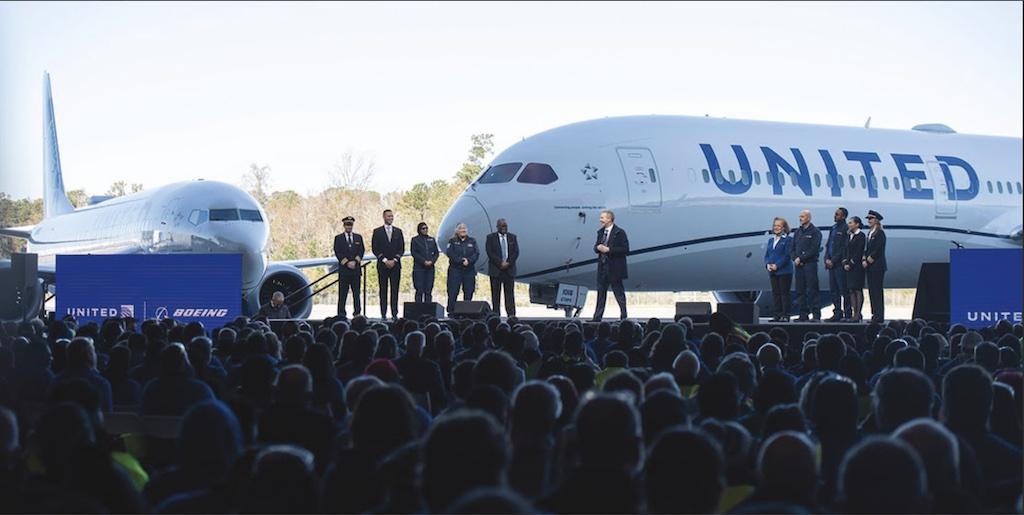
The front page story surely met with smiles or scowls in different Washington, D.C. offices whose occupants hold contrary views on a matter of increasing sensitivity.
That recent Wall Street Journal article centered on the infrequency that top Boeing executives, and CEO David Calhoun in particular, occupy the company’s Arlington, Virginia headquarters. Calhoun, who travels frequently on business and has residences in New Hampshire and South Carolina, ventures into HQ “once or twice a month,” according to the Journal. Key facilitators cited were the company’s Challenger business jets.
While the information might seem unremarkable to business aviation denizens, it highlights the uneven application of the return-to-office movement and raises questions about corporate aircraft usage. Both considerations help buoy a dubious piece of proposed legislation awkwardly titled the “Fueling Alternative Transportation with a Carbon Aviation Tax” simply to arrive at the acronym, “FATCAT.”
Introduced in July by Sen. Edward Markey (D-MA) and Rep. Nydia Velazquez (D-NY), the bill calls for increasing the federal tax on business jet fuel from $0.219/gal to $1.95/gal. The justification for the 900% hike? Quoting Markey: “Billionaires and the ultra-wealthy are getting a bargain, paying less in taxes each year to fly private and contribute more pollution than millions of drivers combined.” And Rep. Velazquez: “It’s time for the rich to pay for their pollution.”
The crux on their charge is the assertion that with few seats business jets per passenger “pollute up to 14 times more than commercial flights,” a calculation attributed to Transport & Environment, a European outfit promoting “zero-emission mobility.” The mischaracterization of all “private jet” passengers as “billionaires,” “ultra-wealthy” and simply “rich,” along with that afore-noted acronym, points to another, less environmentally noble but timeless incentive: Sticking it to the Haves to cheer the Have-Nots.
As with most such proposals, the odds of the bill actually becoming law are long. This one is understandably contested by the National Business Aviation Association (NBAA) that stated, “we oppose efforts to unfairly single out one mode of transportation for punitive tax treatment.”
Even if passed, the bill’s impact would fall well short of its purported goal of cleansing the environment while helping support public transport, particularly in low income areas. More expensive fuel could curb operations of smaller and older aircraft, but the price of Jet A is much less of a go/no go consideration for operators of expensive, long-range machines. Moreover, the General Aviation Manufacturers Association maintains that the world’s business jets are responsible for just 0.04% of global CO2 emissions, so grounding all 22,000 (Source: Aviation Week Network Fleet Discovery) would hardly move the clean-air needle.
And yet, the finger-pointing, name-calling, statistical dueling and airport demonstrations continue unabated. The situation is a matter of continuing and growing concern, an assessment shared by business aviation sages including Dick Van Gemert and Doug Schwartz, among others.
This fight the filthy flyers movement may have taken root in Europe but is growing steadily on the Atlantic’s western shores and receiving eager media attention in outlets ranging from The New York Times, CNN and Fox News to the Robb Report, magazines, websites and more. And those in the fore can surprise. Here is businessman and once enthusiastic jet owner Stephen Prince now so upset about his aircraft’s emissions, he announced plans to sell it and support the FATCAT legislation. And over there in handcuffs is Abigail Disney (yes, Walt’s grandniece and family heiress), under arrest for blocking road access to jets alighting at a Long Island airport favored by sun seeking elites and others.
The aviation industry has pledged to achieve net-zero emissions primarily through the use of Sustainable Aviation Fuel. Attaining that goal will, hopefully, put an end to the charges of environmental despoilment. However, the self-imposed deadline is a generation off, and I question the acceptance of such a distant target by those accusers. Advancing full compliance by the business jet community would help. A lot.
Meanwhile, at its core, business aviation’s purpose is to benefit the many. Consider one stealthy mission in 2009. The assignment of those aboard the company jet touching down one night at a small, remote airstrip was to assess the viability of manufacturing at an international airport 70 miles distant. Ultimately their findings were so positive that today 7,500 people work at that site, there to assemble the much in demand, fuel-efficient Boeing 787s.





